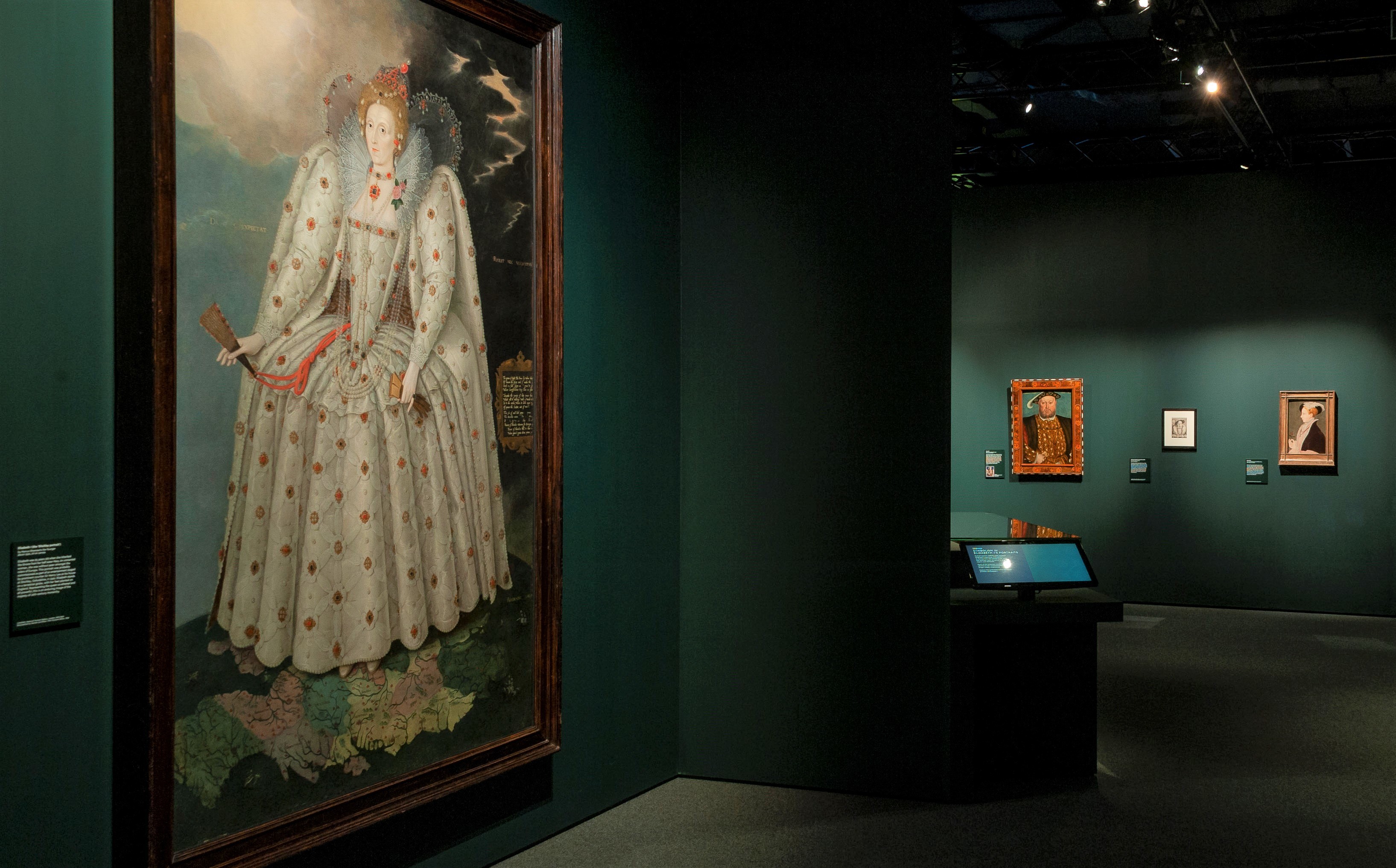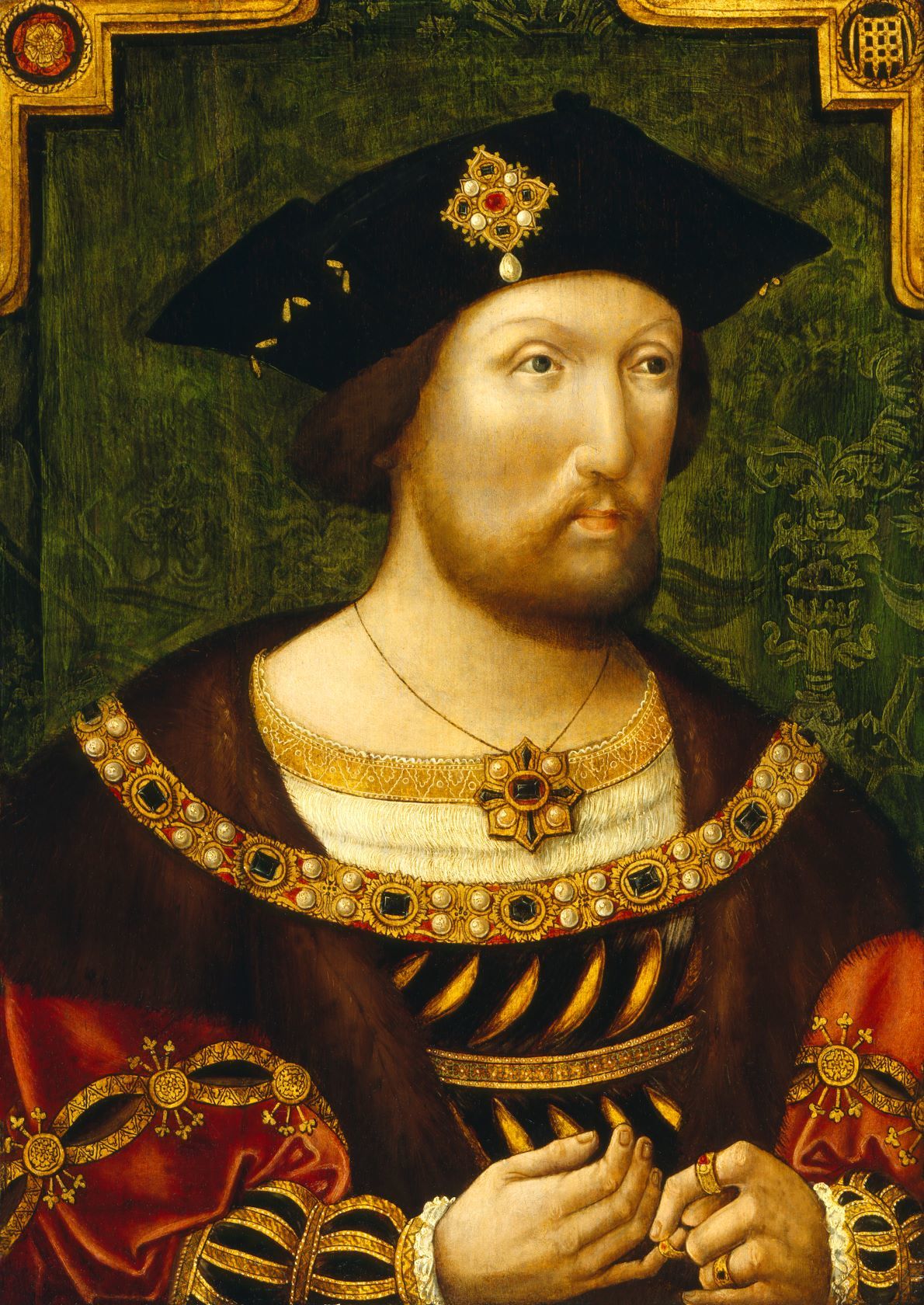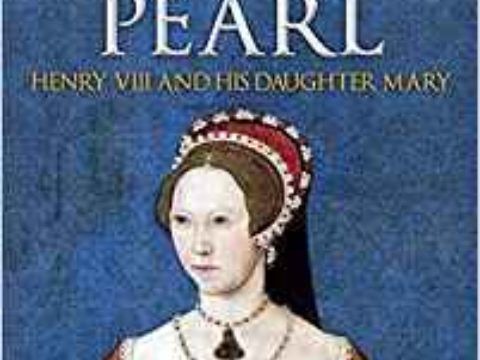Tudors to Windsors: British Royal Portraits Exhibition
National Maritime Museum, Greenwich

The sheen of cloth of silver in the doublet of Robert Devereux, Earl of Essex; the suggestion of slightly greying hair at the temples of Henry VII; the arrogant sneer of Barbara, Duchess of Cleveland, and the tiny, curled hands of HM The Queen in her first official photograph at the age of five weeks, are just some of the highlights of this fantastic exhibition. From Tudors to Windsors brings together some of the best, and least, well-known of the portraits of English, and then British monarchs (with one lone Scottish likeness from before the Union of the crown of Mary Queen of Scots) and a few favoured courtiers. This is a display of the importance of image in the role of monarchy and how the use of image has evolved to emphasise the different characteristics of a monarch thought important.

Prior to the late 15th century, portraiture was about types, not individuals, but from the penetrating gaze of Henry VII, positioned at eye level just at the entrance, to the moving (in both senses) holographic portrait of The Queen that closes the exhibition, we see a wide range of pictures, created for different purposes. The pair of marriage portraits of Mary I and Philip of Spain, produced in multiples for dissemination throughout England and Europe, showed the important alliance their union represented; the charming portrait of the beautiful Queen Alexandra giving a piggyback to her daughter, Princess Louise, showed a playful, family impression, echoed by a similar picture of Diana, Princess of Wales with the Duke of Sussex, whilst the paintings of Elizabeth I emphasise her virginity and near divinity. In contrast, the portrait of Charles I – who genuinely believed in his near-divine status – gives an early vision of a king as a more approachable human being. Whilst flanked by his royal regalia, he is wearing slightly more comfortable clothes, and riding boots – although he is not quite so informal as Nell Gwynn, mistress of Charles II, portrayed naked to the waist.

Interesting parallels can be drawn between the suit of armour, made for Edward VI when he was about twelve, and the sailor suit worn by Edward VII at the age of five. The former reflected an age when kings still went to war in person, whilst the latter illustrates the removal of monarchs, if not the other members of the royal family, to more arm’s-length military duties. Not, of course, that later monarchs don’t appear in military dress, both before and after accession. Kings George VI as head of the armed forces in World War Two, and The Queen herself, the only female member of the royal family formally to serve in the armed forces (although Mary, Queen of Scots led her own troops in person), appears in her uniform as a member of the Auxiliary Territorial Service.

The exhibition shows the evolution of family portraits over the period. The children of James VI & I and Anne of Denmark, Prince Henry Frederick and Princess Elizabeth, later Queen of Bohemia (and ancestor of the current royal family) seem to have been deliberately posed in single, formal portraits, to accentuate the Stuarts’ legitimate claim to have succeeded their Tudor cousins. A generation later, their nephews and nieces, children of Charles I and Henrietta Maria, appear in an early family group, obviously children, but still posed as royalty. The Hanoverians began a more relaxed style, which was followed by Queen Victoria, with her many family-focused paintings and photographs, and this has continued. There is a heart-warming image of The Queen with a young Prince Charles and Princess Anne, all laughing, and some particularly lovely shots of the very photogenic Diana, Princess of Wales, and her sons. A poignant picture of Princes William and Harry in a semi-formal conversation pose is unusual in being in a loosely painted style, rather than the very precise brushwork in most paintings of The Queen. Although they are very different in style, the Ditchley portrait of Elizabeth I and the Pietro Annigoni painting of Elizabeth II are perhaps the strongest representations of the sheer loneliness of monarchy.

Generational portraits have been popular since the days of Queen Victoria, and there are several versions, showing both continuity and change. As Lampedusa’s Sicilian nobleman noted, ‘[i]f we want things to stay as they are, things will have to change’ – a dictum that the British Royal Family has understood very thoroughly.
Another feature of the collection is the gold and silver medallions showing various monarchs. It is unusual to see gold items much bigger than a ring, but some of these were several centimetres in diameter, and caught the light spectacularly, highlighting the royal profiles and allowing the viewer to imagine how the glittering gold and jewels that drape many of the figures would have dazzled bystanders. It is hard to choose a favourite piece, but the miniature by Cosway of George, Prince of Wales, later Prince Regent, is extraordinary. It is tiny but the prince and his glorious red coat leap out of the frame.
On a practical note, the exhibition is beautifully hung - good heights, lighting well done (there is only one painting where the light slightly obscures the face, which seems often to happen in exhibitions). It was also a delight to be able to approach the paintings without the wires that are often in place.
The National Maritime Museum is always worth visiting: elegant buildings, a beautiful park, and fascinating exhibits. This exhibition makes it an even more worthwhile destination. Go!!
Tudors to Windsors: British Royal Portraits exhibition will be on show at the National Maritime Museum, Greenwich, from 28 May - 31 October 2021
Click here for tickets and more information.
